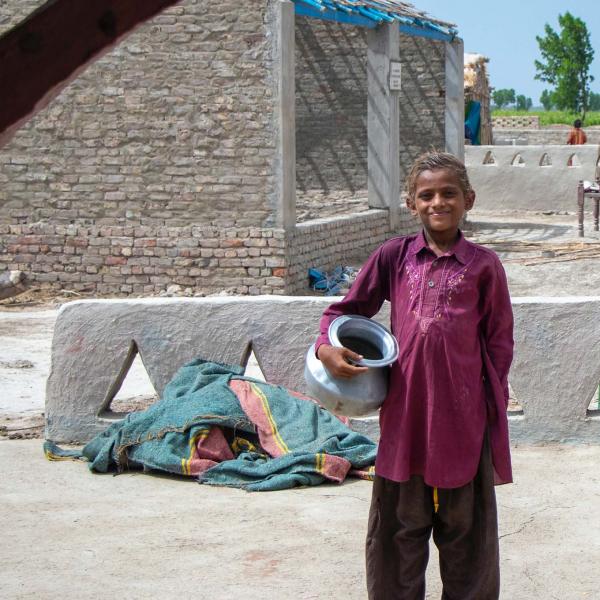Rishi Sunak presented his first budget back in March 2020, just before the first lockdown. He allocated £12 billion to cover possible costs associated with Covid. In the immediate aftermath, I said that “it remains to be seen whether it will be enough to support public services, support the vulnerable and insulate the economy from long-term effects”. More than £300 billion later, I think we know the answer to that particular conundrum.
A year and a half — and numerous fiscal announcements — on, Sunak will again be hoping that he can present a budget that is not dominated by Covid. He’ll have an eye on some of the immediate challenges facing the economy, but his focus will be on the medium term. He has a three-year spending review to deliver and an ambition to get the public finances back on a stable footing.
This will be the second budget of 2021, but the third major fiscal event. In March we were promised big increases in corporation tax and a freezing for four years of the income tax personal allowance and higher-rate threshold. The prime minister followed up in September with a big rise in national insurance contributions. Together these announcements will increase taxes by more than £40 billion a year, making this the biggest year for tax rises since at least 1993. The first two represent a screeching U-turn on Conservative policy over the past decade. The latter is a clear breach of a manifesto commitment. And let’s be clear: that national insurance increase to pay for health and social care has nothing to do with the pandemic. A tax rise that was always going to be needed to fund our ever more expensive healthcare system has been smuggled in under cover of Covid.
Those tax increases are one reason why the medium-term outlook for the public finances appears remarkably healthy. According to the International Monetary Fund, Britain’s budget deficit will fall faster than that of almost any other advanced country over the next few years. The other reason is the expectation that the economy will bounce back strongly from the shock of Covid and lockdown, with a long-term loss of only 1 per cent or 2 per cent of national income. Contrast that with the huge permanent loss of national income — of perhaps more than 10 per cent — that we suffered after the recession just over a decade ago. There’s every chance we’ll be back to current budget balance, borrowing only for investment, as soon as 2023. Since current budget balance appears to be Sunak’s medium-term aim, all might seem to be well with his fiscal world.
So well, in fact, that day-to-day spending on public services is set to rise by more than 3 per cent a year over the next three years. The last two spending reviews, each covering only one year, announced annual spending increases of around 4 per cent. These are Brownesque figures: spending is set to grow over this parliament at a rate much closer to the heady days of New Labour than the austere days of Cameron and Osborne.
Sunak, a Conservative chancellor, is presiding over a tax burden rising to its highest sustained level in history and a state, measured as the fraction of the economy taken up by public spending, growing to a level bigger than at any time, outside of recessions, since the early 1980s.
So can we expect more of good old Rishi handing out wodges of cash to all and sundry? Well, no. He may be presiding over record tax and spending, but he still faces some tough decisions. He has already set his overall spending envelope, so we know how much he has to give away. That’s how we know spending will increase at that pretty rapid 3 per cent a year. His problem is that the government has committed to such big increases in spending on the NHS, as well as having pre-commitments to schools, defence and overseas aid, that he is not left with much for anything else. Health spending now takes up an astonishing fraction of the total: more than 40 per cent of day-to-day public service spending. Just 20 years ago it was only about a quarter of the total. That’s why the recently announced increases to NHS spending mean that there is actually rather little left for everything else.
Certainly, if he keeps to the totals he has committed to, all the same old public services that have been starved of cash over the past decade — local government, further education, the justice system — will get a lot less than 3 per cent a year. They might get only 3 per cent over three years, which, after cuts of 20 per cent or more in some cases, won’t feel like an awful lot.
All of those calculations ignore the pressures that Covid will place on services over the next few years. Nothing has yet been allocated beyond this year to deal with losses faced by the railways, the backlogs in the courts system or additional costs faced in education and local government. I wouldn’t bet a brass farthing on the NHS not coming back for even more at some point in the next three years.
The real problem is that spending can happily grow at 3 per cent a year if the economy is also growing at 3 per cent a year. It isn’t and it won’t, not least because of the chilling effect that Brexit will continue to have. Put that together with pressures from an ageing population and the insatiable demands of our ravenous NHS and Sunak may not be the last chancellor to raise taxes while struggling to find the money to prop up our other public services.
This article was first published in the Times and is reproduced here with kind permission.









